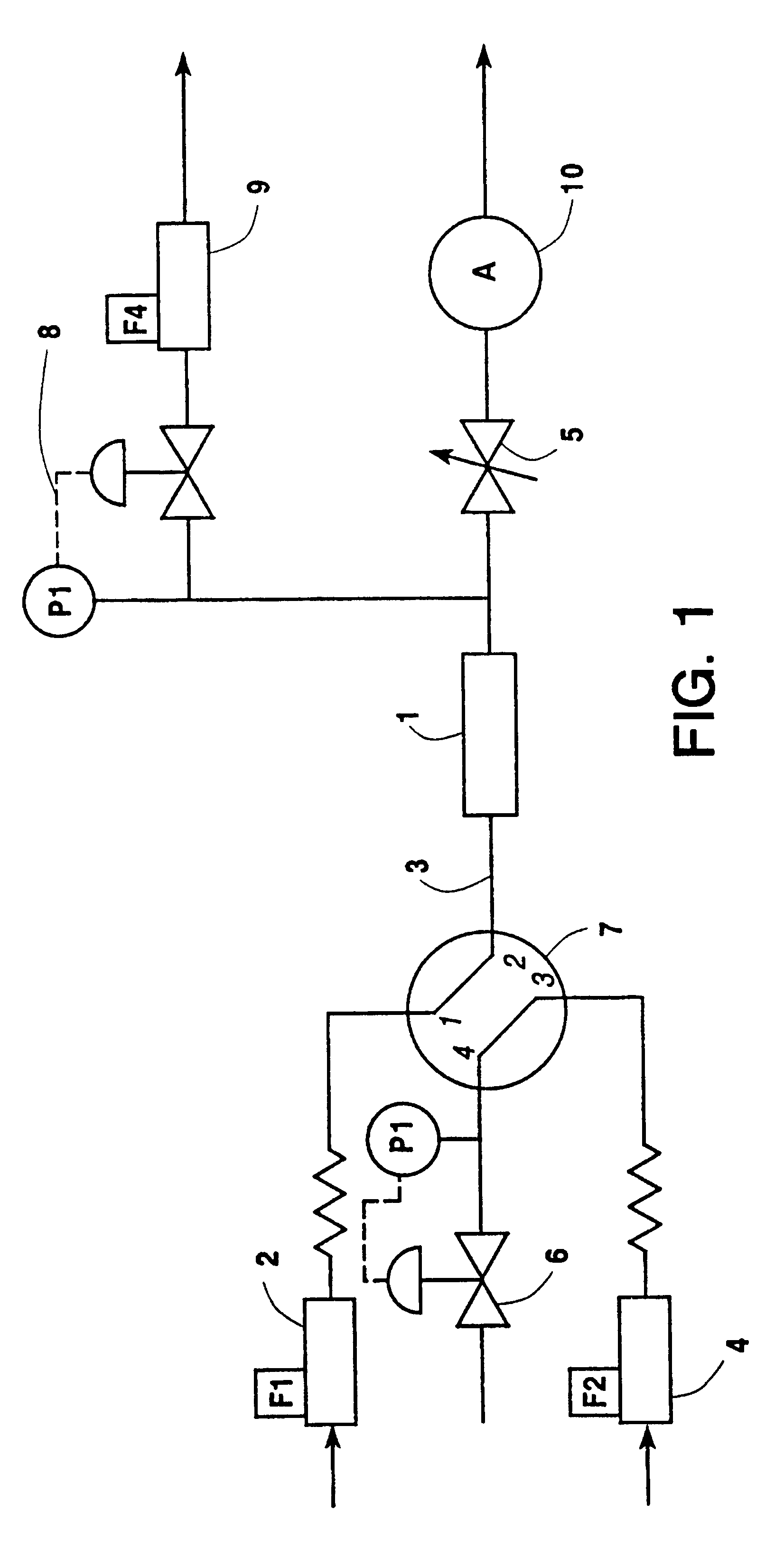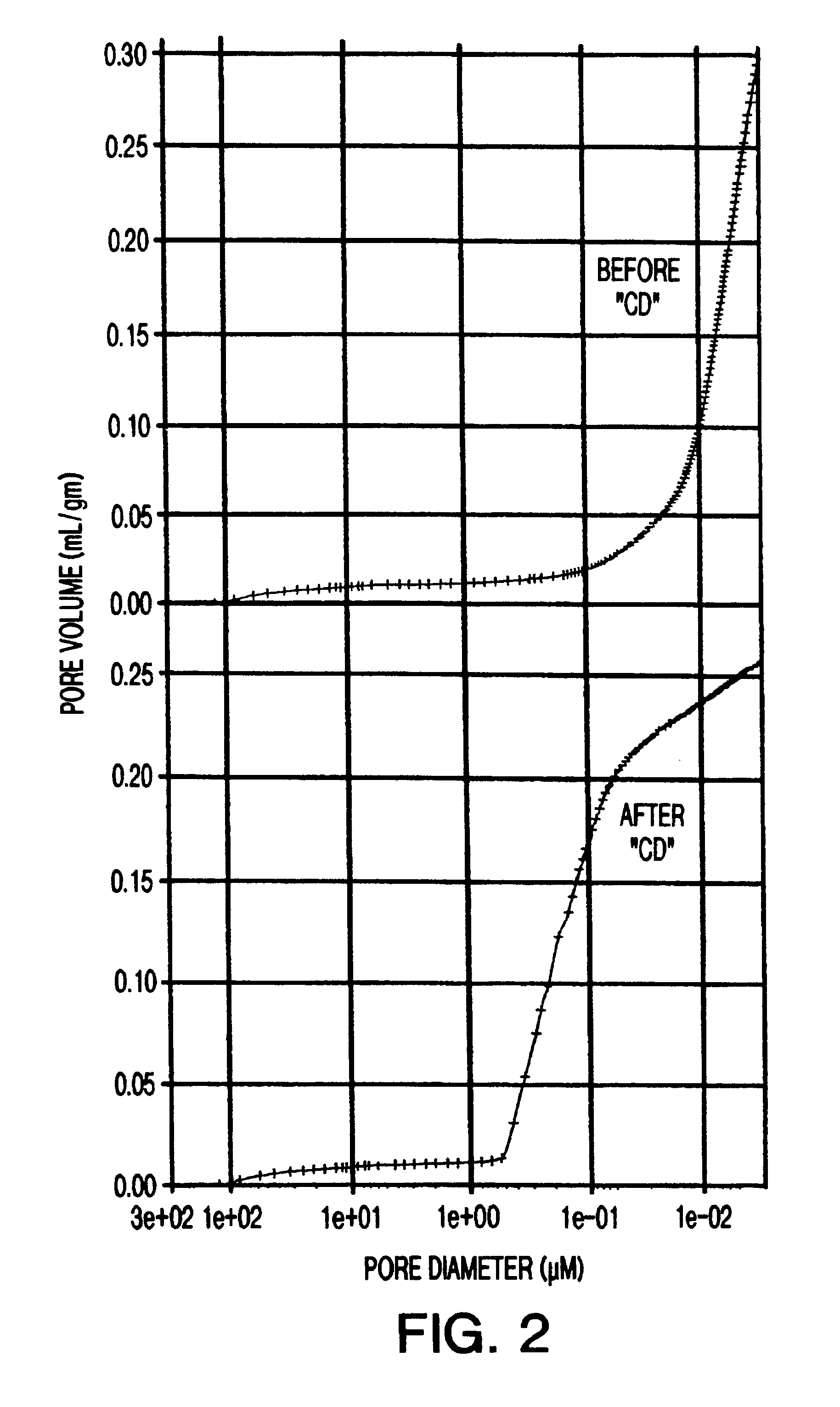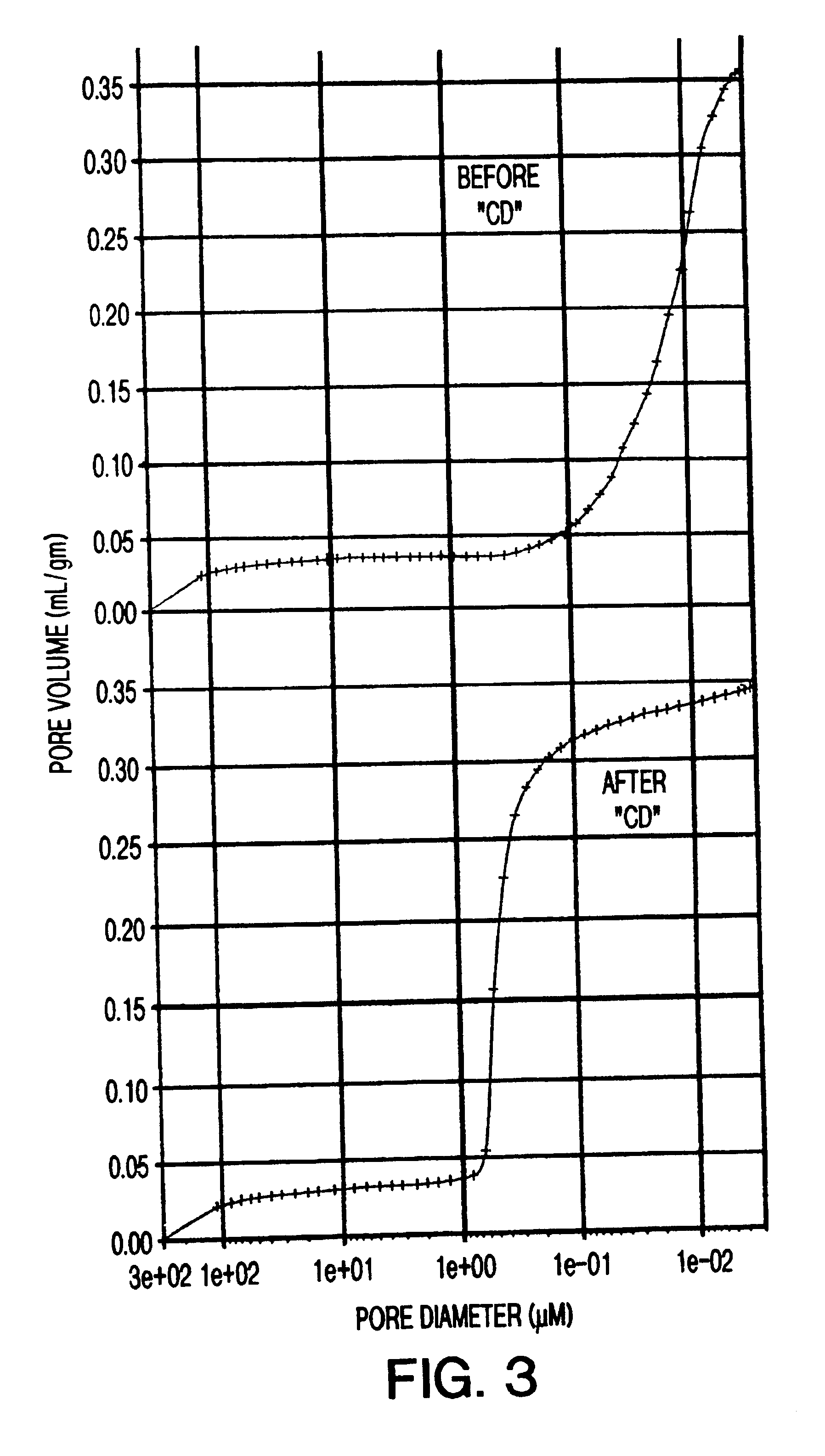Advanced adsorbent for PSA
a technology of adsorbent and psa, which is applied in the direction of physical/chemical process catalysts, other chemical processes, separation processes, etc., can solve the problems of increased pressure drop across the bed, increased fluidization potential, and increased difficulty in particle retention in the bed, so as to improve the mass transfer rate of adsorbent materials, short cycle time, and fast mass transfer rate
- Summary
- Abstract
- Description
- Claims
- Application Information
AI Technical Summary
Benefits of technology
Problems solved by technology
Method used
Image
Examples
example # 2
EXAMPLE #2
Sample 9 (BD and CD) was measured, with the porosity being 30.75% and 29.6%, respectively. Again caustic digestion reduced the porosity, but the porosities of these samples are still higher than samples made with 20% clay.
As discussed above, this is because the excess binder creates excessive zeolite growth that at least partially fills the macropores and reduces porosity and reduces rate. These samples have uni-modal pores.
FIG. 3 plots the cumulative intrusion volume vs. diameter for these samples. Again most of the macropore volume of BD beads is in the 0.0001.mu. to 0.01.mu. range with the median pore diameter being 0.012.mu..
After caustic digestion, the majority of macropores registered at 0.4.mu. with a median pore diameter of 0.47.mu.. In contrast recall the CD samples of Example 1 which had an average pore diameter of 0.32.mu. and a wide pore diameter distribution. As will be shown, the rate of sample 3CD is slower than sample 9CD.
The data illustrates that higher bi...
example # 3
EXAMPLE #3
Three pairs of samples made with 12% kaolin were studied (Samples 14-16). The results are listed in Table 1. The pore diameter distribution of Sample 14 (BD and CD) is plotted in FIG. 4.
The averaged porosity of the BD beads is 34.5% and of the CD beads is 32.6%. Once again, the caustic digestion reduced the porosity of the beads. The reduction of binder content also further increased the porosity of the beads (as compared to those samples with higher binder content).
FIG. 4 shows that both 14 BD and 14CD are uni-modal. Once more, the BD sample has all its pore volume detected as pores with a very small diameter, with the median diameter being 0.02.mu.. Caustic digestion shifted the median pore diameter to 0.53.mu.. The TTVR of samples 14 BD and 14 CD are 0.02 and 11.5. The TTVRs are listed in Table 1.
Sample 14 (BD and CD) was also characterized via SEM measurements (See FIGS. 5 and 6, respectively). The samples were prepared using a "potted cross-section" procedure. First, ...
example # 4
EXAMPLE #4
SCRR measurements were made using the apparatus described above.
SCRR measurements were conducted on LiX2.0BD samples 3 and 4; 9 and 14-16. Results are listed in Table 1. The averaged SCRR increased from 0.22 to 0.37 to 0.38 as the clay content dropped from 20% to 15% to 12%. The porosity of the samples increased from 28.91 (samples 3 BD and 4 BD) to 30.97 (sample 9 BD) to 34.46 (samples 14BD and 16BD). The median pore diameter of all of these samples in the range of 0.01 microns. The TTVR values are all <1.
The SCRR of the these BD samples was not substantially effected by the binder level change and porosity change, especially as binder reduced from 15% to 12%. The rate of all these samples is considered very low when compared to caustic digested and fiber added samples.
PUM
| Property | Measurement | Unit |
|---|---|---|
| macropore diameter | aaaaa | aaaaa |
| porosity | aaaaa | aaaaa |
| porosity | aaaaa | aaaaa |
Abstract
Description
Claims
Application Information
 Login to View More
Login to View More - R&D
- Intellectual Property
- Life Sciences
- Materials
- Tech Scout
- Unparalleled Data Quality
- Higher Quality Content
- 60% Fewer Hallucinations
Browse by: Latest US Patents, China's latest patents, Technical Efficacy Thesaurus, Application Domain, Technology Topic, Popular Technical Reports.
© 2025 PatSnap. All rights reserved.Legal|Privacy policy|Modern Slavery Act Transparency Statement|Sitemap|About US| Contact US: help@patsnap.com



